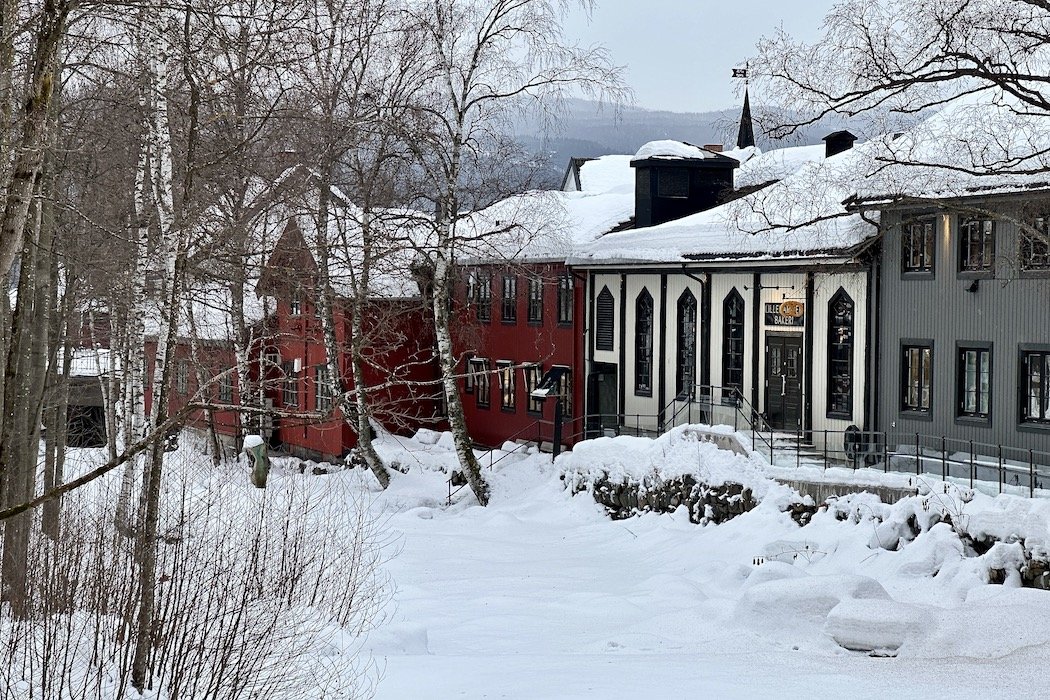Winter Wonderland in Far-off Lillehammer
Lillehammer in winter seen from the lakeside activity park
“He who marvels at the world’s beauty in summer will find equal cause for wonder in winter.” — John Burroughs
Located in Gudbrandsen Valley in eastern Norway, Lillehammer lies among mountains at the northern end of Norway’s largest lake, Mjøsa. Though the town is known for both summer and winter outdoor activities, and as the host city of the 1994 Winter Olympics, it is still away from the mainstream, especially for foreign visitors. Just a two-hour train ride from Oslo, scenic and charming Lillehammer, whose name means little rocky hill, is the country’s oldest ski resort. The uncrowded slopes are blessed with ample snowfall and good conditions that ensure fun days and relaxing runs. In winter, the daytime sky takes on a subdued hue due to the few daylight hours. And by night, the Northern Lights might appear to the lucky.
Aside from snow-based activities, Lillehammer boasts a cultural heritage and an interesting history. The 13th-century Birkebeiner legend has it that two warriors escorted a child heir to the Norwegian throne from Lillehammer to Trondheim. Every year since then in March, Norwegians commemorate that journey with two cross-country skiing races that both end in town with celebrations. No legend, Norway’s gold was transported from Oslo and stored in a Lillehammer bank safe during WWII.
Lillehammer’s town center is anchored by a picturesque main shopping street lined with colorfully painted wooden townhouses. The atmosphere is cozy yet lively, and many shops offer locally made woolen goods and other Norwegian crafts. The adjacent Mesna Bruk neighborhood is where the King and Pilgrim Road to Nidaros Cathedral in Trondheim has crossed the Mesna River since St. Olaf died in 1030. In 1814, innovators designed and produced new machinery and agricultural equipment, making this Lillehammer’s industrial cradle. Now Mesna's creative activity includes a modern craft bakery and a micro-brewery.
Lillehammer’s Art Museum features local works of art in a sleek, modern building. From there, a 15-minute walk uphill past the church, a museum complex includes the Olympic Museum (where kick-sleds are lent for winter transport), the open-air Maihaugen museum, and an indoor folk exhibition. All are well worth visiting, especially the journey back in time from the Middle Ages to the early 20th century that Maihaugen provides, from Garmo Stave Church built around 1200 to the 15th-century fishermen’s chapel, the valley’s first permanent schoolhouse built in 1863, and the current Queen Sonja’s 1935 childhood home.
From the other end of town, the walk to the Olympic Park goes past a small timber 1930s house called Bjerkebæk, open from spring to fall, where Nobel laureate Sigrid Undset lived and wrote. At the Olympic Park, school children play sports year-round near the Lysgårdsbakken Ski Jumping Arena. A chairlift provides views over the park, valley, forested hills, and the lake below. From the top, it’s possible to ride down Scandinavia’s only bobsled/ luge track. On frozen Mjøsa Lake, skaters and fishermen share the ice near the Activity Park or the jetty across the lake.
The nearby higher mountains of Hafjell and Kvitfjell offer downhill skiing as well as cross-country on kilometers of trails by streams and forests. Near Hafjell, Hunderfossen Winter Park builds a snow hotel each year that opens on weekends from early February through March and is home to a 14-meter (45ft.) tall carved wooden troll. When the Northern Lights don’t dance in Lillehammer’s night ski, scenic tranquility might appear in the pink and purple hues of the sunrise.
Don’t Miss:
The Miahaugen open-air Museum any time of year.
Serendipity:
Locals along the way- when a bakery manager suggests renting ice skates and venturing onto the lake.
Lunch Tip:
The Little Pancake House for homemade soup and savory (or sweet) Dutch-style Poffertjes.
Dinner:
Helvet, a fine-dining restaurant in the old bank where Norway’s gold was hidden during WWII.
Bedtime:
Aksjemøllen, a cozy and modern hotel in an ancient mill on the Mesna Brook in town.
Subscribe for inspiration to have my posts drop directly into your inbox. *If you enjoyed what you read, please share this post with like-minded travelers.*
*All photographs are mine, taken with my Nikon D5600 or iPhone 14 Pro.*











